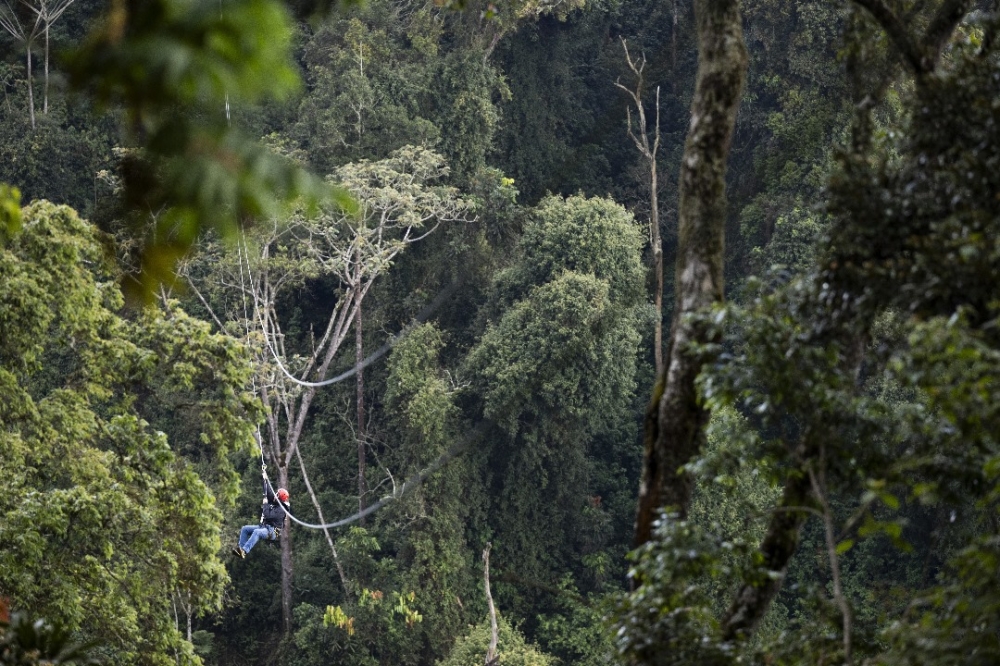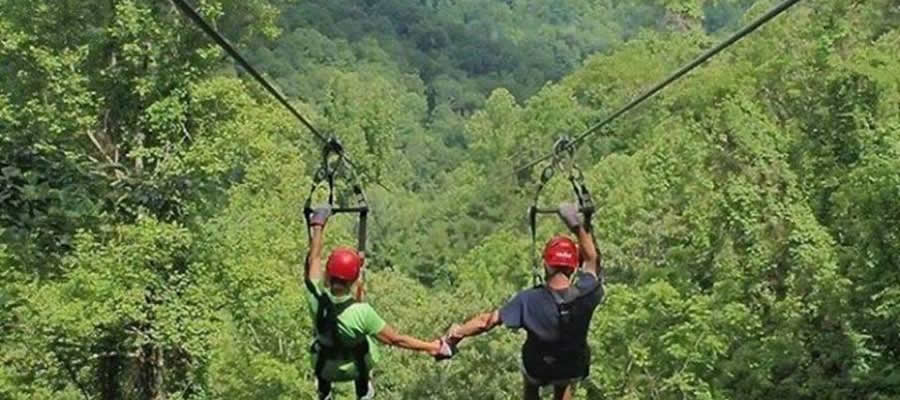Zip Lining in Nyungwe Forest National Park
Zip Lining in Nyungwe Forest National Park, Nyungwe is found in the southwestern parts of Rwanda near the border of Burundi. The park was set as a forest reserve in 1933 and in 2005 it was made a national park, and it has a size of 1,019km with different vegetation types such as tropical rain forest, grassland, Swamp, and bamboo vegetation. The park is a UNESCO world heritage site and its home to 13 primate groups,300 birds and 1068 plant species. The Nyungwe zip lining is one of the hidden jams of Africa’s safari experience since it offers visitors a stunning view of the oldest rainforest in Africa. Visitors also get a rare chance to soar above the thick green vegetation cover. Although, the park has been known for canopy walk, primate tracking and hiking trails, Zip lining has recently been added to the activities done in Nyungwe Forest. This activity is the best for nature lovers, birders and adventure seekers. All you need to know about Zip lining at Nyungwe forest is explained below.
Nyungwe Zip lining
In Nyungwe, zip lining is a thoughtfully planned activity that blends excitement, sustainability, and the natural world. The zip line starts at the Uwinka Reception Center and was started as part of a larger project by African Parks and the Rwanda Development Board. In collaboration with Rwanda, African Parks oversees the site and makes sure that all tourism-related activities promote local jobs and reinvest in the park’s preservation. The trip is not only a personal joy but also directly contributes to the sustainability of the environment because guides, rangers, and even the infrastructure crews are recruited from the surrounding communities. The smooth integration of zip lining with Nyungwe’s conservation aim is one of the sport’s most notable features.

Length and Height
It is one of the longest zip lines in Africa, with three sections that add up to an incredible 1,935 meters in length. The first 350-meter section serves as an introduction to the border of the woodland. The second section accelerates over 500 meters as it soars between ridgelines and towering woods. The last 1,000-meter stretch provides an amazing view of the rocky landscape, tree canopies, and far-off hills covered in mist. Riders are suspended 20 to 50 meters above the ground and can attain speeds of up to 60 kilometers per hour.
Zip lining experience
The whole zip lining experience is about the combination of human adrenaline and unspoiled nature, not only about height or speed. Before take-off, participants are required to attend a safety briefing and are outfitted with professional-grade equipment, like as helmets, gloves, and harnesses. Trained guides supervise the operation and make sure that all international safety regulations are followed. There is a moment of silence as you take off from the platform, during which the forest appears to hold its breath. A huge sea of green treetops stretches into the horizon, birds dart across your path, and occasionally you catch a glimpse of colobus monkeys jump through the branches as the wind rushes by your ears and the view opens up. It is a very liberating and powerful experience that serves as a reminder that the forest is alive in both visible and invisible ways. Zip lining through Nyungwe Forest is ultimately an invitation to experience one of Africa’s few surviving montane rainforests from a completely different perspective, making it more than just an exhilarating experience. It’s an experience that will stick with you long after your feet have touched the ground a celebration of nature, conservation, and community empowerment.
Guidelines
Although most people can physically participate in zip lining, there are several limitations.
Generally speaking, the lowest weight is about 40 kg, and the highest is about 120 kg. The kids older than ten are permitted as long as they weigh the required minimum.
Although the sport is amazingly safe for people in excellent health and reasonably fit, it is not advised for people with heart issues or recent surgeries.

What is the cost of zip lining in Nyungwe Forest National Park
The zip line experience alone costs $100 for foreign non-residents and $80 for African residents. There is a 20,000 Rwandan franc local fee for East Africans. Packages that combine the zip line with other well-liked attractions, such the canopy walkway or the recently constructed rope course next to the Gisakura entrance, are also offered. These packages provide diversity and value, making them perfect for tourists looking for a full day of forest exploration.
Best time
The greatest times to visit Nyungwe’s zip line are during the dry seasons, which are June through September and December through February. However, the line is open all year round. The forest is alive with the activity of birds, monkeys, and the whispering leaves disturbed by mild mountain winds during these months, when the skies are clear and the platforms remain dry. In order to guarantee quality and safety, reservations should be made well in advance, especially during the busiest travel seasons of July, August, and the December holiday season, when daily capacity is restricted. Planning ahead is advised because rainy seasons, which usually occur from March to May and again from October to November, may see temporary closures for safety.
There are lodging options close to Nyungwe to suit a range of tastes and budgets
Luxury accommodation
- Nyungwe Forest Lodge
Mid-range accommodation
- Nyungwe Top view Hill Hotel
- Nyungwe Nziza Eco lodge
Budget accommodation.
- Uwinka Campsite
- Kitabi Eco Center
- Gisakura Guest House

